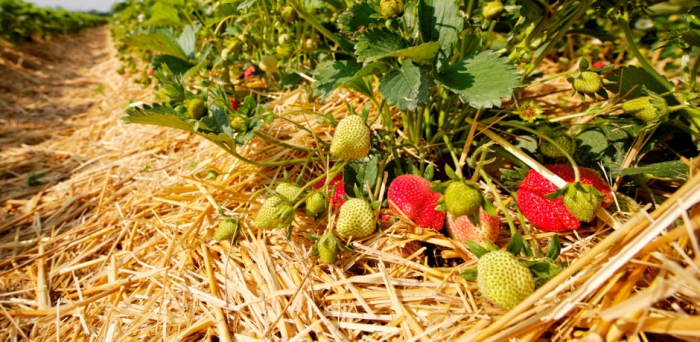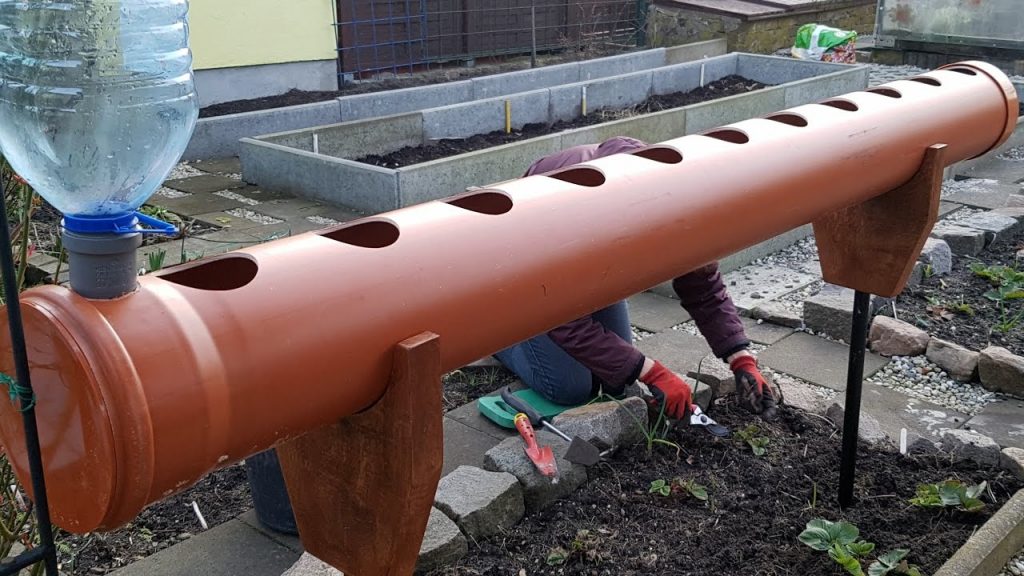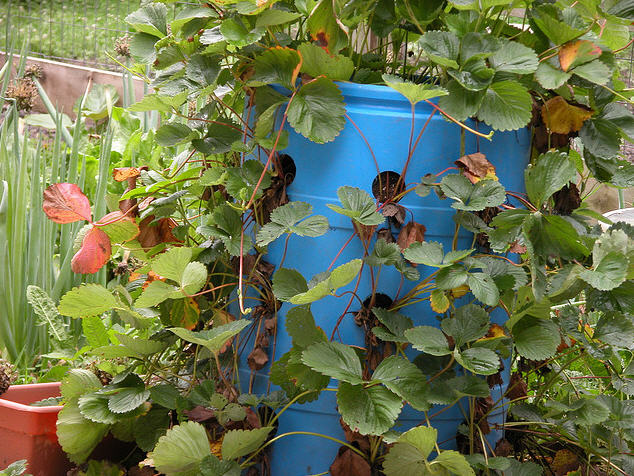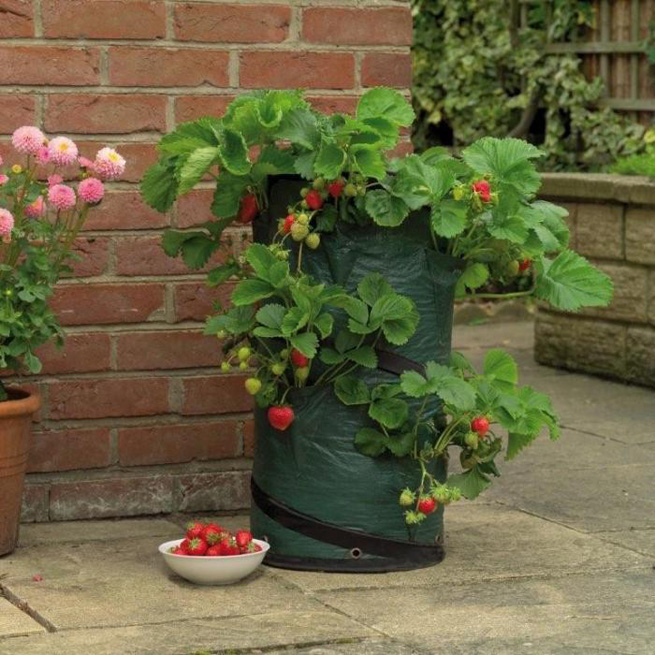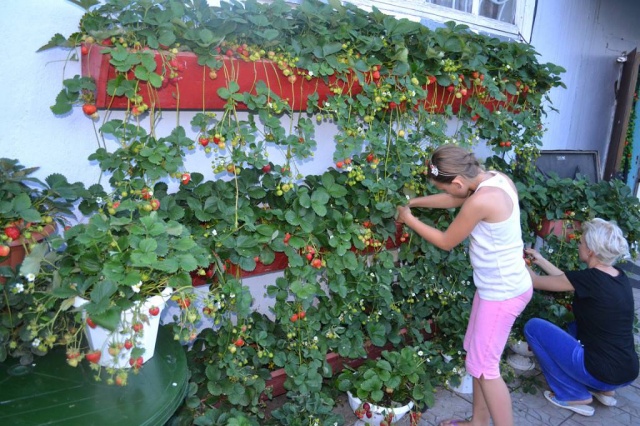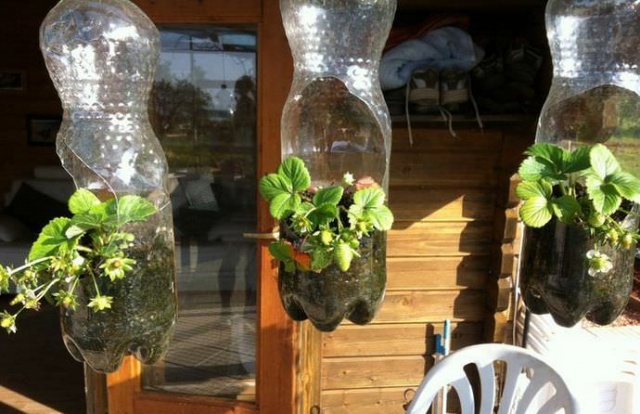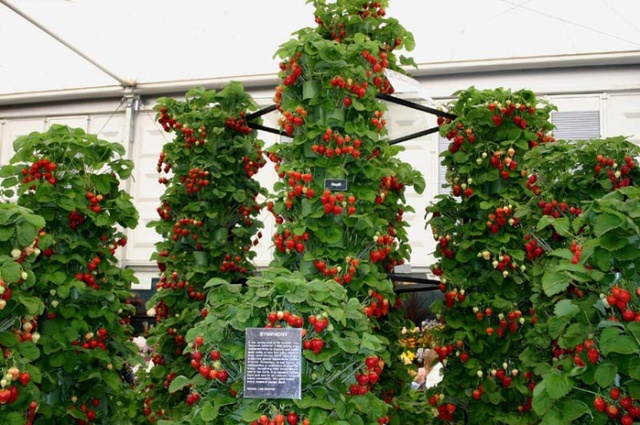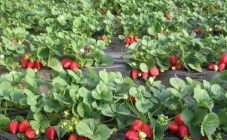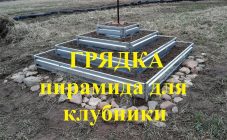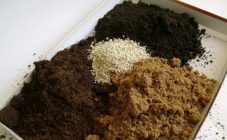Content:
Most gardeners have long abandoned the old-fashioned way of carpet growing strawberries. This article will tell you how to make a strawberry bed more compact, warm and comfortable.
How to make a strawberry bed with your own hands
Gardeners have invented many original beds: raised, vertical, pyramid-shaped, horizontal tiered. For their construction, they use various improvised materials left after the construction of a house or simply lying in landfills.
Most often, in garden plots, you can find high (raised) beds. They are a box made of boards, slate or plastic panels with a height of 20 to 40 cm, you can also use galvanized iron boxes bought in a store. In width, they should be such that two rows of bushes fit, providing an approach to them from both sides, that is, 80 cm is quite enough. The length is arbitrary, depending on the chosen place and material.
Passages of 40-50 cm are left between the beds, and it is better to direct them from east to west so that the rows are constantly illuminated by the sun and do not shade each other. At the site for the construction of beds, the top layer of soil is first removed, the surface is leveled. A drainage layer is laid at the bottom of the boxes, then the nutrient soil.
In the middle lane and northern regions, it is advisable to make such beds warm by laying a layer of biofuel under the soil: fresh manure, grass, straw, food waste and other organic matter, which releases heat when rotted. In this case, the height of the bed must be increased to 1 meter.
Nutrient soil is prepared from compost, bird droppings, sand and garden soil. Seedling bushes are planted at a distance of 40 cm from one another, retreating from the side of 20 cm. It is recommended to use mulching; for this purpose, a black covering material is perfect, which is covered with the soil surface so that weeds do not grow. Then cross-shaped cuts are cut and seedlings are planted in them. This will completely protect the planting from weeds and help retain moisture.
The advantages of raised beds:
- ease of care;
- irrigation water does not spread, but all goes under the roots;
- a high bed serves as protection against pests;
- nutritious soil does not need additional fertilizers, ensuring high yields.
The disadvantages include:
- material costs;
- labor costs for construction;
- in harsh winters, such beds will have to be insulated.
- With a shortage of space on the site, several types of vertical beds can be recommended.
Strawberry pipe bed
PVC sewer pipes are widely used for both vertical and horizontal strawberry beds. This type can be used both in the open field and in greenhouses.
With horizontal pipes, it is easier to ensure an even distribution of water during irrigation. It is advisable to place the pipes one above the other in several tiers, but you can simply attach a single pipe to a fence or wall. The construction technology is as follows:
- In a pipe with a diameter of 150 mm, holes are cut in one line - holes for planting seedlings, the distance between them must be at least 150 mm;
- In addition, an irrigation pipe with a diameter of 30 to 40 mm and a length of 15 to 20 cm longer than a thick one is needed. Many small holes are randomly drilled into it. This tube is wrapped in burlap or other similar material to prevent small holes from becoming clogged with dirt. The irrigation pipe is laid inside a large pipe, one end is plugged;
- For thick pipes, plugs are prepared with holes for thin pipes, then thick pipes are plugged, the ends of thin pipes are threaded into the holes;
- The beds of pipes are attached to the base, filled with nutritious soil, seedlings are planted in the cut-out windows. Watering is carried out through the free ends of the irrigation pipes.
Also, the pipes for the beds can be arranged vertically. With this method, you can do without a foundation by simply digging the pipe into the ground. Holes for holes are also cut in the pipes, but their number per running meter of the pipe can be large, because they are staggered on all sides of the pipe. The use of an irrigation tube is mandatory here, otherwise it is impossible to ensure an even distribution of water.
If such pipes - beds are connected with the upper ends of three or four pieces, and the lower ends are pushed apart, then they will reliably support each other, no support is required.
Barrel strawberries: growing
Another option for a vertical bed is to make it from an old leaky barrel, which it was high time to throw it away as unnecessary. In addition to barrels, buckets placed one on top of the other, car tires assembled in the form of a pyramid and other containers are suitable.
The barrel is prepared as follows:
- cleaned from dirt;
- holes are made in the bottom for drainage;
- vertically installed irrigation pipes with a diameter of 30 - 40 mm and a length slightly longer than the length of the barrel with drilled small holes. The lower ends of the irrigation pipes are muffled;
- cover the bottom with broken brick, expanded clay or crushed stone;
- holes for the holes are first made in the lower tier, then the barrel is filled with soil above the holes, then the next row of holes is cut, the soil is filled up, and so on until the barrel is filled.
- Strawberry seedlings in a barrel are planted in holes - holes, as well as on the surface of the soil above.
For growing in vertical beds, remontant strawberries are more suitable. Care is almost no different from care in a regular garden bed, only you will have to water more often, since the soil, warming up from all sides, dries up faster. Top dressing, like watering, is carried out through irrigation pipes.
Growing strawberries in bags
The cultivation of strawberries in bags according to Dutch technology (some call it Finnish) is becoming increasingly popular among amateurs. The bag is the same vertical bed, and it can be laid horizontally, installed vertically or hung.
In specialized stores, ready-made bags for the beds are sold, and you can use bags for sugar, cereals or flour.
You can grow strawberries in bags in the open field seasonally, or all year round by placing them in a heated greenhouse. The way the bags are arranged is chosen depending on the room used. For year-round cultivation, artificial lighting must be used. No more than three hanging bags are placed on one square.
The planting holes should be 7 - 8 cm in size, the distance between them is 30 - 35 cm. For large volumes, installation of an irrigation system is required, and for small volumes, irrigation pipes should be placed in each bag. The bottom layer in the bag should be drainage to drain excess water.
The soil is prepared from a mixture of sod land, compost, sand and sawdust, organic and mineral fertilizers are applied to it. Bags are filled with this substrate, then they are installed, suspended, laid out on multi-level racks or simply on the ground, seedlings are planted in the holes.
The timing of planting seedlings is in the summer at the end of August, or in the spring at the beginning of April.
Self-pollinated remontant varieties can be suitable for cultivation using this technology.
Care for bagged strawberries:
- Regular watering.
- As soon as the seedling has taken root, it is fed with organic matter, and during the flowering period - with potash fertilizer. Fertilizers can be applied in liquid form through irrigation tubes.
- A comfortable temperature for strawberries is +20 degrees.
With proper agricultural technology, this growing method allows you to harvest up to 5 times a year.
Strawberries in boxes
This method makes it possible to plant seedlings indoors in early spring, and with the onset of heat, take these boxes out into the open air and get an early harvest. And in the fall, the bushes in boxes are again brought into the room and continue to bear fruit under artificial lighting throughout the winter.
Growing in boxes can also be used for decorative purposes. How beautiful a balcony decorated with strawberries with flowers in a box will look like!
Strawberries in plastic bottles
Strawberries in plastic bottles can be used to decorate fences, walls of an old barn, place them on the walls of houses, covered balconies. In addition to aesthetic pleasure, the gardener may well provide himself and his loved ones with fresh tasty berries.
This method gives such a scope for creativity that it is difficult to even list all the possible options. In addition to its undeniable advantages, it has a number of disadvantages, the main one of which is the small volume of soil in bottles (we are not talking about five-liter containers). The soil overheats and dries out quickly. The addition of a hydrogel to the soil will help to cope with this.
The soil is quickly depleted. It will help the addition of granular complex fertilizers to the soil, which slowly dissolve, gradually nourishing the plant.
In winter, the ground in bottles freezes and the plant dies. There are three ways out: bring strawberries in plastic bottles for the winter in a warm room, apply reliable insulation, and grow them as an annual crop.
With the correct selection of varieties and adherence to simple rules, you can get high yields by growing strawberries in bottles.
Original strawberry beds
The most unusual containers such as old furniture, baby carriages, car wheels can be used as beds. And here is another not at all costly solution: a bed of pallets.
The pallet is cut into pieces of the desired size, which are collected in a box. It needs to be treated with an antiseptic and the inner walls should be closed with agrofibre. Then fill it layer by layer with humus and garden soil, plant strawberry seedlings on top and in the side slots, making holes in the fiber for this.
A vertical bed from a whole pallet can be made even easier by stitching it up on the back with plywood and simply leaning it against the wall of the house. You can also install two pallets obliquely, supporting one another, sew up the structure with boards from the sides, leaving gaps between them, fill with soil - you get a triangular prism, which is easy to plant with seedlings from all four sides.
This article is not a step-by-step guide, but only a demonstration of how many smart and interesting solutions you can come up with when creating unusual strawberry beds.

